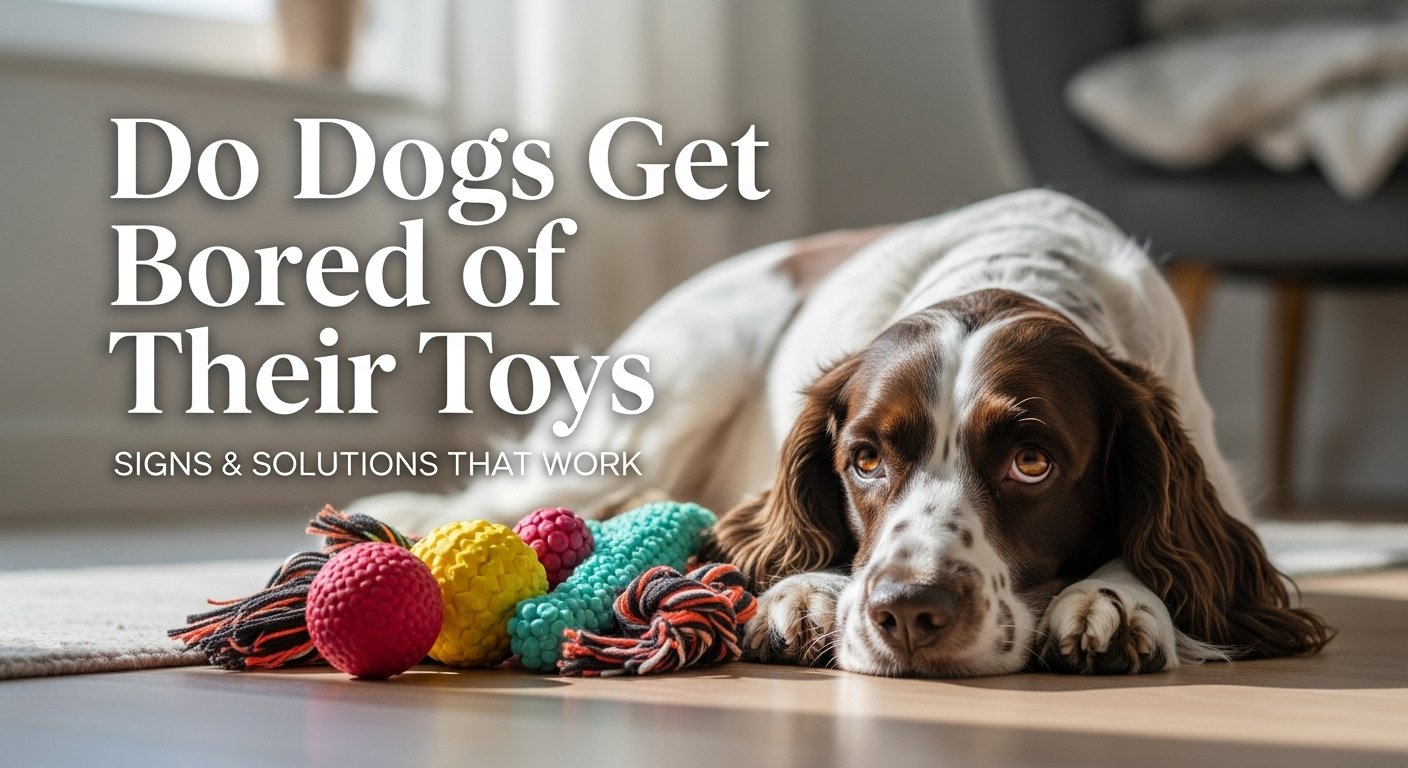
Do Dogs Get Bored of Their Toys? Signs & Solutions
If you’ve ever bought your dog a brand-new toy only to watch them play with it once and ignore it forever you’re not alone. Many pet parents wonder: do dogs actually get bored of their toys?
The short answer: Yes. Dogs crave mental and physical stimulation, and when toys lose their novelty, they move on. But don’t worry there are plenty of ways to keep your pup engaged.
Let’s explore the science behind toy boredom, the signs to watch for, and solutions to keep your furry friend entertained.
Do Dogs Really Get Bored of Toys?
Yes. Just like humans lose interest in a book or game they’ve experienced too often, dogs also need variety and novelty.
- Dogs are problem-solvers. Once they’ve figured out a toy, it no longer challenges them.
- Play = stimulation. Without engagement, toys become “just another object.”
- High intelligence breeds (Border Collies, Poodles, German Shepherds) get bored especially fast.
Think of toys as mental workouts. Without variety, your dog tunes out.
Signs Your Dog Is Bored of Their Toys
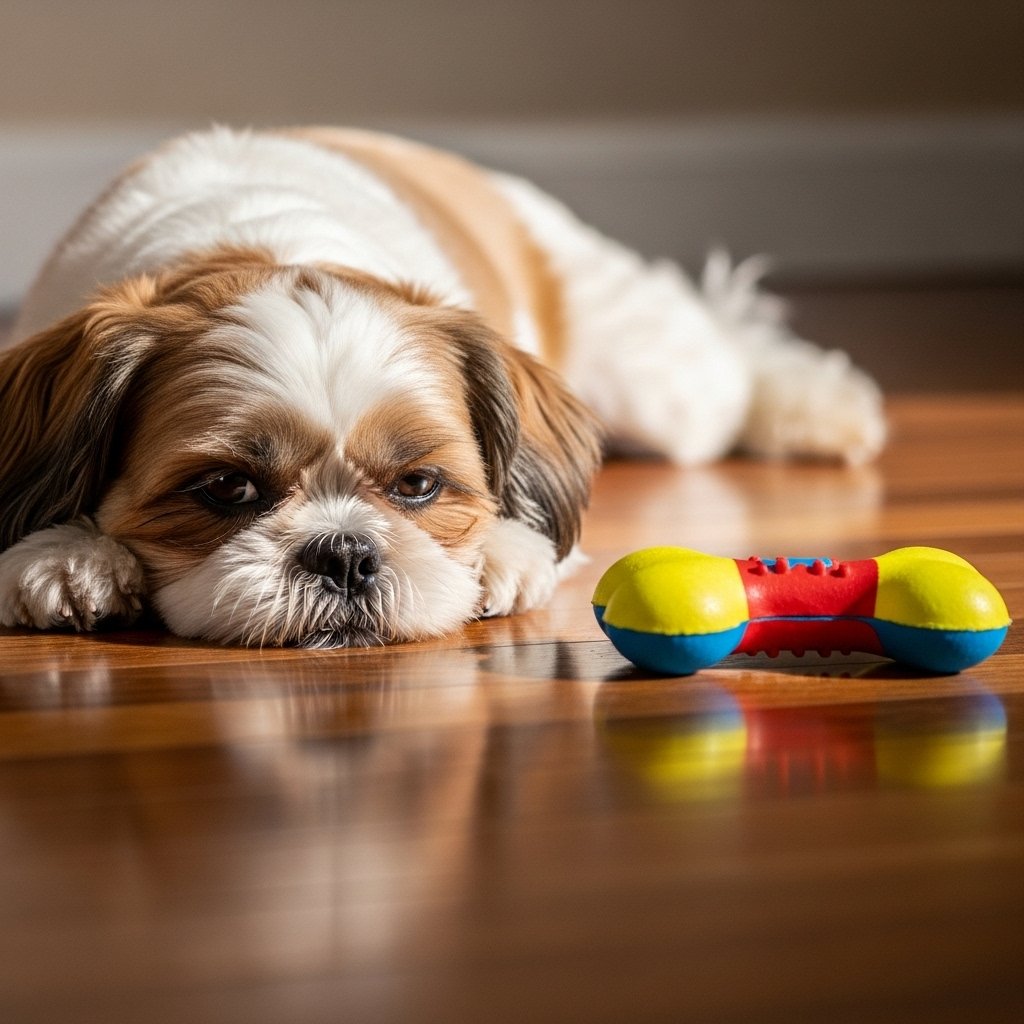
- Ignoring toys they once loved
- Chewing furniture or shoes instead
- Pacing, whining, or restlessness even after exercise
- Only playing when you engage with the toy
- Destroying toys quickly out of frustration, not fun
Why Do Dogs Lose Interest?
- Lack of Novelty → Same toy, same game, every day.
- Not Challenging Enough → Once solved, puzzle toys lose appeal.
- Overexposure → Toys left out 24/7 become background objects.
- Breed & Energy Level → Working dogs need extra stimulation.
- Lack of Owner Interaction → Dogs crave bonding, not just solo play.
Smart Solutions to Prevent Toy Boredom
- Rotate Toys Regularly
- Keep 3–4 toys out at a time.
- Swap weekly for novelty.
- Store extras in a basket (out of sight).
- Use Puzzle & Interactive Toys
- Food-dispensing toys like KONG Classic or Nina Ottosson puzzles challenge dogs mentally.
- Interactive toys keep problem-solving sharp.
- Engage With Play
- Tug, fetch, hide-and-seek with toys.
- Dogs often need you to “activate” the toy.
- Introduce DIY Enrichment
- Hide toys in blankets for snuffle play.
- Freeze treats in toys for extra challenge.
- Rotate DIY puzzles using cardboard boxes or muffin tins.
- Match Toys to Personality
- Chewers: Durable rubber toys.
- Hunters: Squeaky prey-like toys.
- Problem-solvers: Puzzle feeders.
- Cuddlers: Soft plush toys.
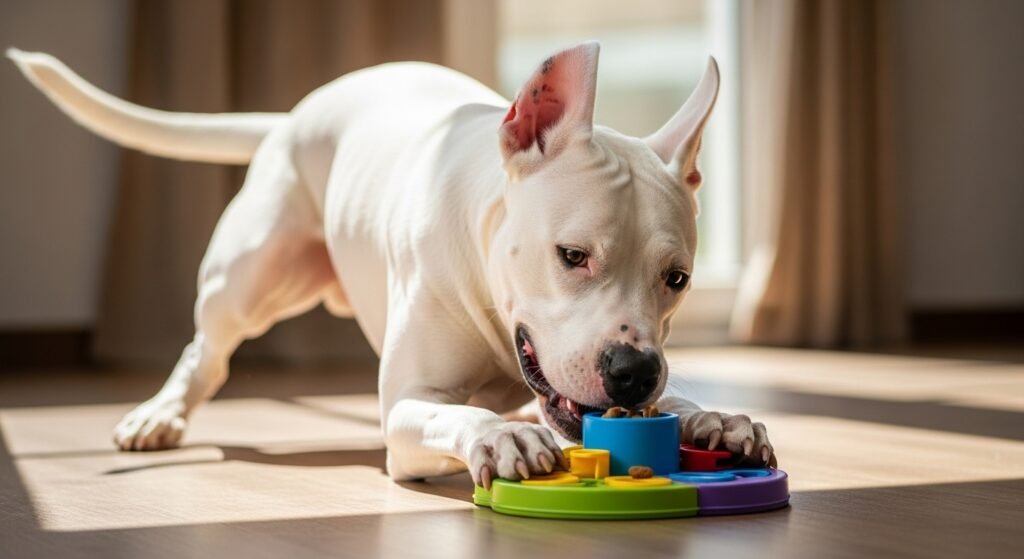
Vet-Approved Tips for Toy Engagement
- Mental exercise = physical exercise. Tired brains = tired dogs.
- Short bursts of new play are better than endless free access.
- Combine toys with training. Use them as rewards during obedience practice.
- Consider social play. Play dates with other dogs reintroduce toys in new contexts.
Recommended Toy Types
- Chew Toys → Satisfy natural chewing instincts (Nylabone, Benebone).
- Fetch Toys → Balls, frisbees, launchers for active play.
- Rope Toys → Great for tug-of-war bonding.
- Puzzle Toys → Mental challenge, keeps them busy.
- Plush Toys → Comfort for anxious dogs.
Having one toy from each category ensures variety.
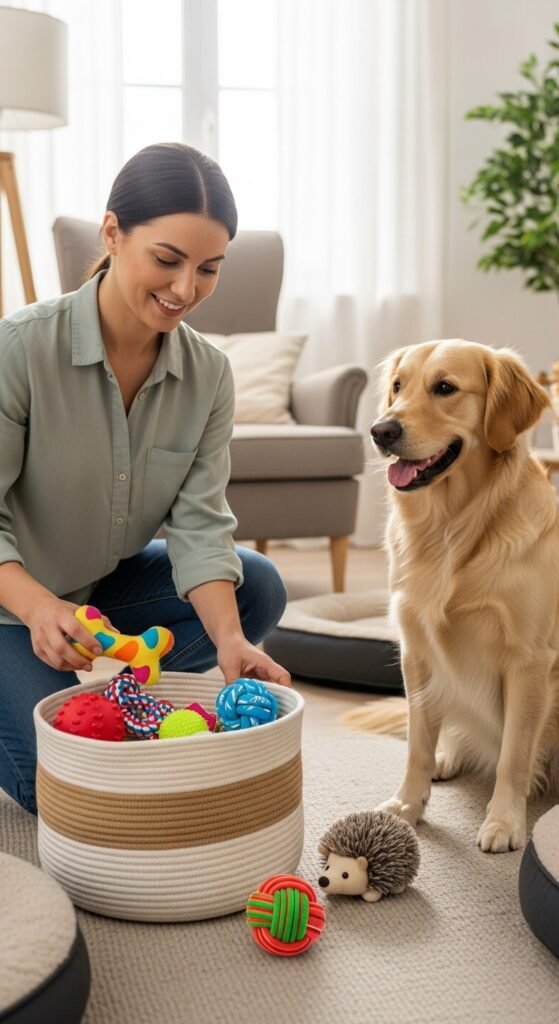
Real-Life Stories
- Bella the Beagle → Ignored her old squeaky toy until her owner put it away for two weeks—then she loved it again like new.
- Max the German Shepherd → Got destructive until his owner introduced puzzle feeders, which reduced boredom.
- Luna the Lab → Thrives on fetch + rotation. She only sees her frisbee on weekends, making it special.
When Toy Boredom = Bigger Problem
If your dog ignores toys AND shows signs of stress (destructive chewing, restlessness, separation anxiety), boredom may be a symptom of under-stimulation.
In that case, increase:
- Exercise (walks, runs, agility training)
- Social interaction (playdates, daycare)
- Training sessions (mental stimulation)
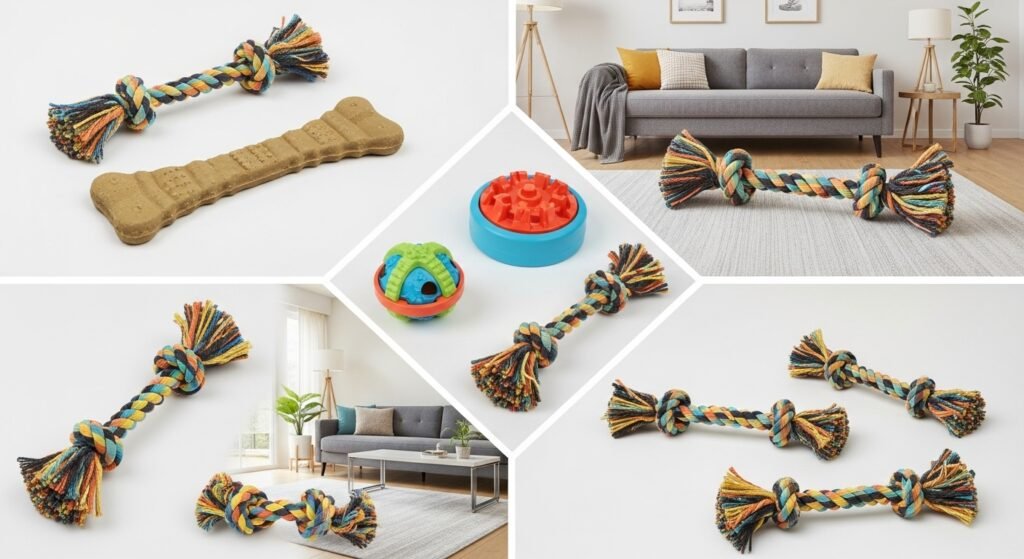
Final Thoughts
Yes, dogs do get bored of their toys but the solution isn’t buying more and more. It’s about rotation, interaction, and enrichment.
Think of toys as tools, not babysitters. With the right mix of variety, puzzle play, and bonding, your dog will stay engaged, stimulated, and happy.
And the best part? You don’t need endless spending to beat toy boredom you just need creativity and consistency.
Ready to Connect?
Enjoyed learning about big dog breeds? Join the Pets Fun Zone community — a growing space for U.S. pet lovers to:
Share photos, stories, and experiences
Ask questions and get advice
Discover recs for food, training, vet care, and more
Join us today at Pets Fun Zone and be part of a caring community of passionate dog lovers!
Let’s welcome all the gentle giants together.



